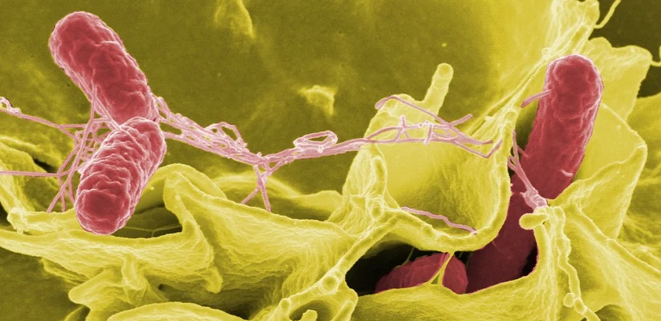TGFβ signaling pathway is altered by HLA-B27 expression, resulting in pathogenic consequences relevant for spondyloarthritis
Résumé
Abstract Background Association of HLA-B27 with spondyloarthritis (SpA) has been known for 50 years, but still remains unexplained. We recently showed that HLA-B27expressed in wing imaginal disc from HLA-B27/human-β2 microglobulin (hβ2m) transgenic Drosophila deregulated bone morphogenetic protein (BMP) pathway by interacting physically with type I BMP receptor (BMPR1) Saxophone (Sax), leading to crossveinless phenotype. Methods Genetic interaction was studied between activin/transforming growth factor β (TGFb) pathway and HLA-B27/hβ2m in transgenic Drosophila wings. The HLA-B27-bound peptidome was characterized in wing imaginal discs. In mesenteric lymph node (mLN) T cells from HLA-B27/hβ2m rat (B27 rat), physical interaction between HLA-B27 and activin receptor-like kinase-2 (ALK2), ALK3 and ALK5 BMPR1s, phosphorylation of small mothers against decapentaplegic (SMADs) and proteins of the non-canonical BMP/TGFb pathways induced by its ligands, and the transcript level of target genes of the TGFb pathway, were evaluated. Results In HLA-B27/hβ2m transgenic Drosophila , inappropriate signalling through the activin/TGFβ pathway, involving Baboon (Babo), the type I activin/TGFβ receptor, contributed to the crossveinless phenotype, in addition to deregulated BMP pathway. We identified peptides bound to HLA-B27 with the canonical binding motif in HLA-B27/hβ2m transgenic Drosophila wing imaginal disc. We demonstrated specific physical interaction, between HLA-B27/hb2m and mammalian orthologs of Sax and Babo, i.e. ALK2 and ALK5 (i.e. TGFb receptor I), in the mLN cells from B27 rat. The magnitude of phosphorylation of SMAD2/3 in response to TGFβ1 was increased in T cells from B27 rats, showing evidence for deregulated TGFb pathway. Accordingly, expression of several target genes of the pathway was increased in T cells from B27 rats, in basal conditions and/or after TGFb exposure, including Foxp3 , Rorc , Runx1 and Maf . Interestingly, Tgfb1 expression was reduced in naïve T cells from B27 rats, even premorbid, an observation consistent with a pro-inflammatory pattern. Conclusions This study shows that HLA-B27 alters the TGFβ pathways in Drosophila and B27 rat. Given the importance of this pathway in CD4 + T cells differentiation and regulation, its disturbance could contribute to the abnormal expansion of pro-inflammatory T helper 17 cells and altered regulatory T cell phenotype observed in B27 rats.
| Origine | Fichiers éditeurs autorisés sur une archive ouverte |
|---|

